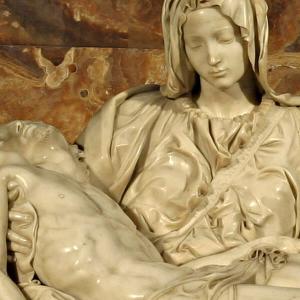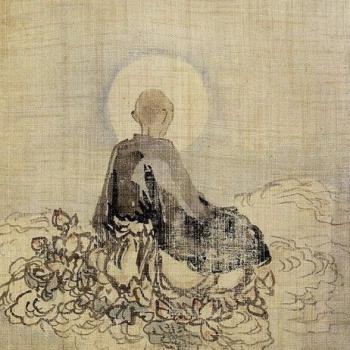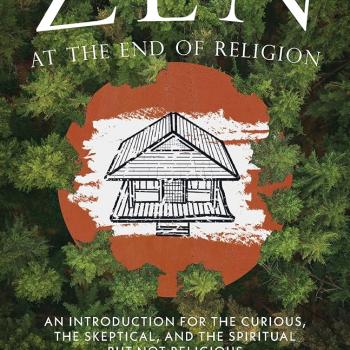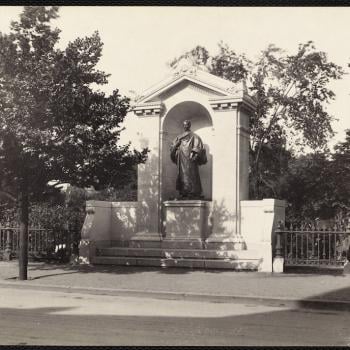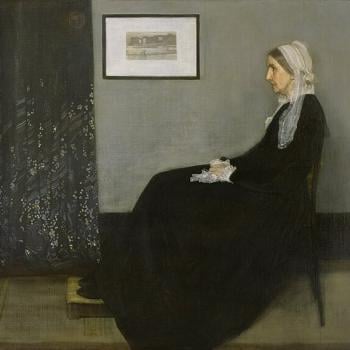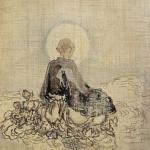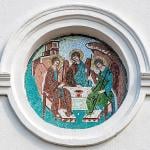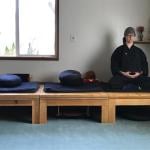This world of dew
Is a world of dew
Even so, even so
Kobayashi Issa
I’ve been writing a fair amount about koans in the last couple of years.
My book An Introduction to the Zen Koan: Learning the Language of Dragons comes out from Wisdom Publications next year. So, various thoughts, observations, and pieces that didn’t go to the book ended up on this page. And, with increasing frequency I’ve scattered over this blog comments on one case or another, as we describe individual koans. Zen’s koans and koan introspection are very much a thing at the heart of my life.
I find koans an amazing spiritual discipline. A wondrous technology of the spirit, if you will. They emerge in early Medieval China, apparently inspired by Daoist drinking games, and morphed into a technology that pushes and pulls and prods us to experience for ourselves the great assertions of the Mahayana Buddhist way. Together with that other discipline, shikantaza, just sitting, koans are the very heart of what Zen is about.
I think of young Henry Thoreau who wrote a poetic rapture about nature that he submitted to the Transcendentalist journal the Dial. Margaret Fuller who was the editor at the time rejected the piece as the juvenile drivel it was. But, wrote a long, long letter, encouraging him. She told him to write of nature he had to live it.
Later in the preface to his own contribution to the world’s spiritual literature, he wrote.
I went to the woods because I wished to live deliberately, to front only the essential facts of life, and see if I could not learn what it had to teach, and not, when I came to die, discover that I had not lived. I did not wish to live what was not life, living is so dear; nor did I wish to practise resignation, unless it was quite necessary. I wanted to live deep and suck out all the marrow of life, to live so sturdily and Spartan-like as to put to rout all that was not life, to cut a broad swath and shave close, to drive life into a corner, and reduce it to its lowest terms, and, if it proved to be mean, why then to get the whole and genuine meanness of it, and publish its meanness to the world; or if it were sublime, to know it by experience, and be able to give a true account of it in my next excursion.
And for me so it is with koans. Engaging them has changed my life, redirected the course of my spiritual investigations, and allowed me, as it says in the Platform Sutra of the Sixth Ancestor and cited numerous times since, to drink the water for myself, and to know for myself whether it is cool or warm.
Koans are a wonderful invitation into our own experience, into our own lives.
And, they can be a trap. The people for whom they can be most dangerous are the smart, the facile, the clever. Once one has tumbled to the great secret about them: that they point to the twin truths of our lives, that we are at once unique, if temporary, and completely bound up in a great play of things that can be named one or empty, but which is something that cannot ever be fully captured; well, then it is possible to think one’s way to the answers. Despite what some who haven’t engaged them might think, or, write, they are the essence of logical.
In my experience the process is sufficiently difficult, and the fact it is practiced within the context of Zen meditation, zazen, shikantaza, just sitting, which is a hard practice, well, frankly, there are easier things to do. If one just wants approval, there are easier ways to do get that. And, so very few people in my experience really try to game the game. Consciously.
A reality of our human condition, of course, is that “conscious” is the tip of a very large iceberg. We are great bundles of things, beautiful and terrible. Most of what that is only pops into what we think of as us, as our waking lives now and again. Largely that waking thing that walks around and calls itself “me” is not the real thing, only a mask. It is a mask to the world. It is, also, a mask that hides us from ourselves.
The path, the real spiritual path is one of depth, one of constant facing in, turning as that lovely line goes, the light inward. Casting that light we go forward and downward to the very depths. Not exactly spreading light, but becoming intimate. Which is a kind of light all of its own.
And koans are an amazing way to do that.
Except we can and will and do lie to ourselves. The reality is that our awakening is always within the particular mess the we are, and our experiences are always centered in the specific causes and conditions that have created us, and with the slightest shift in angle we can tumble from heaven to hell. Fortunately the other way, as well. That noted, if we’re among the smart, the facile, the clever, we can trick ourselves in a particular way on the koan way. We can let the fact we can “answer” a koan become a substitute for finding our heart’s path. It’s an easy step. We think we’re going to the very depths when we’re actually keeping ourselves inside the tour bus.
For me what I’ve found helpful is contained in the Chinese word Xin. It is sometimes translated as mind. And it is sometimes translated as heart. And it is sometimes rendered as faith. We get a pointer in the beloved Zen text the Xinxin Ming.
The great way is not difficult.
It only calls us to see through differences;
Once you cease grasping after illusions of love and hate,
The way is fully present.
My paraphrase. The critical third line has a number of translations. D. T. Suzuki renders it “Only when freed of hate and love,” while Lok Sang Ho gives a literal “like not, dislike not.” People often think the secret of Buddhism is to not care. And reading the Pali texts one can see how easy that can be to think. But at least in the Mahayana, and I believe in the Theravada, this is not the point. Certainly on the Zen way we are invited not to turn away, but to see through. And, always, always, also: to be with. This is a practice of the mind, no doubt. But, equally it is a practice of the heart. And, it is a faithful way.
So, this world of dew is indeed a world of dew – with all that means. And, there’s something else. There is always that “Even so, even so.”
We are not asked to throw away that lingering sense of our affections. Rather, in the seeing through, in our finding the truth that we are as passing as the morning dew, something lovely happens. Here those old canards of self power and other power drift away. And, what we find is that mind that is heart that is faith. The awakened moment is experienced within that tension which is our experience of life and death, the buzz of life. It is messy and lovely and yes, sometimes, ugly.
It is our lives. The locus of our awakening.
The problem for some of us on the koan way is that we let the koans work on us to the point of seeing the passingness of things. Or, at least we can touch something in our hearts that allows us to present responses that don’t seem to cling. But, too often we don’t allow that other part its place. So, instead of seeing through, we bury. And the psychologists have some stern warnings about that.
For me the great way is not found in a moment that breaks everything open. Although I’ve had those moments. And they’re important.
What I’ve found the great way to be, is one step after another. It includes moments of everything breaking open. It also includes making a bed without that breaking open. It is how we meet a cup of coffee. It is how we react to the specific person we meet in the street. It is found in that faithfulness to the practice and to the world of which I am a part. It is always striving to see through. And, it is always being with. The Bodhisattva way is to never turn away. And, when we discover we have, to turn back. That’s faithfulness.
The old saying is when hungry eat, when tired sleep. It appears to be a call to spontaneity. And, it is. But, not that alone. Rather there is something powerful in that moment of hunger. There is more to the fix of that yearning than simply eating. It is knowing my hunger is yours. And my access to food must also be yours. We are in this together in ways that the words I write only can hint at. It is messy. And we fall and we get up and we fall again.
It is the intimate way. So, of course, we must know for ourselves. And.
And, to make the koan way valuable it is critical that we not only answer the koans in the traditional sense, but that we open ourselves with each one, not as markers on a check list, but as one more invitation into the intimate. It is all about seeing through and being with.
Living into that fully and faithfully, well, that is a lifetime journey. And then one more step.
The great way is not difficult. Just see through. And, yet. And, yet. Beautiful. Ugly. Mind. Heart. all of it. All of it.
That’s the heart of the koan. And of our lives.


